Code
HCS12330
Weight
150 gm / 0.33 lbs
Size
Height
1cm (0") Width
55cm (22") Material
Agate
Availability
Available
Date Added
2016-07-12 12:57:23
Note : We used to sell this product 9 years ago so it may no longer be in our stock.
It is possible that we still have it with our suppliers but the price could be different from before.
Feel free to order. We will verify availability and inform you promptly.
It is possible that we still have it with our suppliers but the price could be different from before.
Feel free to order. We will verify availability and inform you promptly.

Safe Payment
We accept Paypal, Money Transfer, Bank Transfer
Confidence
Protection covers your purchase and personal data.
Worldwide Delivery
We ship Worldwide, except Russia.Shipping cost US$25.2 for upto 0.5 kgs

Hotline
Talk to help line for your question on 9841267335Brief Introduction :
Prayer beads, or mala beads, are an important tool for many Buddhist practitioners. In Buddhism, mala beads are used as a tool to aid in the recitation of prayers and mantras and to help cultivate mindfulness and concentration.
Traditionally, mala beads are made from natural materials such as wood, seeds, or stones. They are typically 108 in number, with each bead representing one recitation of a prayer or mantra. This number is believed to have spiritual significance, as 108 is a sacred number in Buddhism and other Eastern spiritual traditions.
When using mala beads, the practitioner holds the beads in the right hand and moves them through the fingers as the prayer or mantra is recited. The practice of reciting prayers or mantras with mala beads is believed to help focus the mind and cultivate mindfulness. Additionally, the physical sensation of moving the beads through the fingers is said to help anchor the mind in the present moment and quiet the distractions of the outside world.
Mala beads are also believed to have powerful spiritual energy, and many practitioners believe that the beads become infused with the energy of the prayers and mantras that are recited over them. For this reason, mala beads are often treated with care and respect, and are sometimes passed down from generation to generation within a family or spiritual community.
In Buddhism, mala beads are used as part of daily spiritual practice, and are often used in meditation, during recitation of prayers, and during other spiritual rituals. They are considered a powerful tool for spiritual growth and mindfulness, and are used by many practitioners to help deepen their spiritual practice.
In conclusion, mala beads are an important tool for many Buddhist practitioners. They are used as a tool to aid in the recitation of prayers and mantras and to help cultivate mindfulness and concentration. They are considered a powerful tool for spiritual growth, and are used by many practitioners to deepen their spiritual practice.
Buddhist prayer beads or malas are similar to other forms of prayer beads used in various world religions and therefore the term "Buddhist rosary" also appears.
Conventional Buddhist tradition counts the beads at 108, signifying the mortal desires of mankind. The number is attributed to the Mokugenji (soapberry seed) Sutra wherein Shakyamuni Buddha instructed King Virudhaka to make such beads and recite the Three Jewels of Buddhism. In later years, various Buddhist sects would either retain the number of beads or divide them into consecutive twos, fours, for brevity or informality. A decorative tassel is sometimes attached to the beads, flanked by talismans or amulets depending on one's local tradition. Because prayer beads are often painted in pigment, various traditional schools attribute a consecration ritual by the Sangha to the beads, to "open the eyes" for the purpose of achieving Enlightenment unique to the Karma of each believer.
What are Buddhist prayer beads?
Malas or Tibetan Buddhist prayer beads are similar to other prayer beads used in various world religions. Some people have called the mala a Buddhist rosary, but in Tibetan, a mala is called a threngwa . Mala is a Sanskrit word meaning garlandÂ. Malas are used to keep track while one recites, chants, or mentally repeats a mantra or the name or names of a deity. Malas are used as a tool to keep count of mantra repetitions. Mantras are spiritual syllables or prayers and are usually repeated many times.

How are malas used?
Malas are used to help focus one's awareness and concentration during spiritual practice. Long malas, as opposed to the shorter wrist malas, have 108 beads. The summit or head bead is called the guru bead or a sumeru. In Tibetan Buddhism, one mala constitutes 100 recitations of a mantra. There are 8 additional recitations done to ensure proper concentration.
What is the meaning of a guru bead?
In Tibetan Buddhism, people traditionally use malas with 108 counting beads and a special, three-holed, finishing bead called r Buddha bead. Often the 108-bead malas have additional marker beads that may or may not be counted and that divide the mala into quadrants, constituting 108 counting beads all together.
The guru bead represents the relationship between the student and the guru or spiritual teacher. To use the mala, you start counting from the bead next to the guru bead. When you reach the guru bead again, it signifies the end of one round in the cycle of mantras.
Once you have completed a full circuit of the mala and reached the guru bead again, you reverse direction by flipping your mala. Then you continue again in reverse order. Most people believe that you do not cross over the guru bead as a sign of respect towards one's spiritual teachers.

How do you hold and use a mala or prayer beads?
The mala is held with gentleness and respect, generally in the left hand. To use your mala, hold it with your left hand and begin to recite from the guru bead, clockwise around the mala, using your thumb to move the beads. Count one bead for each recitation of the mantra. The first bead is held between the index finger and thumb, and with each recitation of the mantra move your thumb to pull another bead in place over the index finger.
Why is the number 108 sacred?
The number 108 is sacred in many Eastern religions including Buddhism, Hinduism, and Jainism. In Tibetan Buddhism malas or rosaries are usually 108 beads plus the guru bead, reflecting the words of the Buddha called in Tibetan the Kangyur in 108 volumes.
How to care for your mala
Malas are sacred objects believed to be charged with the energy of the deity. They should be treated with great reverence.
As with all sacred objects, such as books and other spiritual instruments, one should keep malas off the ground. If your mala accidentally lands on the ground, you should touch it to the crown of your head and recite the sacred syllables Om Ah Hum, three times.
The mala should not be worn while bathing, or allowed to get wet, as this may weaken the cord on which the mala beads are strung. It is best to remove your mala before going to sleep so that you do not accidentally stress the cord and break it.
According To TPN.ORG :When using mala beads, the practitioner holds the beads in the right hand and moves them through the fingers as the prayer or mantra is recited. The practice of reciting prayers or mantras with mala beads is believed to help focus the mind and cultivate mindfulness. Additionally, the physical sensation of moving the beads through the fingers is said to help anchor the mind in the present moment and quiet the distractions of the outside world.
Mala beads are also believed to have powerful spiritual energy, and many practitioners believe that the beads become infused with the energy of the prayers and mantras that are recited over them. For this reason, mala beads are often treated with care and respect, and are sometimes passed down from generation to generation within a family or spiritual community.
In Buddhism, mala beads are used as part of daily spiritual practice, and are often used in meditation, during recitation of prayers, and during other spiritual rituals. They are considered a powerful tool for spiritual growth and mindfulness, and are used by many practitioners to help deepen their spiritual practice.
In conclusion, mala beads are an important tool for many Buddhist practitioners. They are used as a tool to aid in the recitation of prayers and mantras and to help cultivate mindfulness and concentration. They are considered a powerful tool for spiritual growth, and are used by many practitioners to deepen their spiritual practice.
Buddhist prayer beads or malas are similar to other forms of prayer beads used in various world religions and therefore the term "Buddhist rosary" also appears.
Conventional Buddhist tradition counts the beads at 108, signifying the mortal desires of mankind. The number is attributed to the Mokugenji (soapberry seed) Sutra wherein Shakyamuni Buddha instructed King Virudhaka to make such beads and recite the Three Jewels of Buddhism. In later years, various Buddhist sects would either retain the number of beads or divide them into consecutive twos, fours, for brevity or informality. A decorative tassel is sometimes attached to the beads, flanked by talismans or amulets depending on one's local tradition. Because prayer beads are often painted in pigment, various traditional schools attribute a consecration ritual by the Sangha to the beads, to "open the eyes" for the purpose of achieving Enlightenment unique to the Karma of each believer.
What are Buddhist prayer beads?
Malas or Tibetan Buddhist prayer beads are similar to other prayer beads used in various world religions. Some people have called the mala a Buddhist rosary, but in Tibetan, a mala is called a threngwa . Mala is a Sanskrit word meaning garlandÂ. Malas are used to keep track while one recites, chants, or mentally repeats a mantra or the name or names of a deity. Malas are used as a tool to keep count of mantra repetitions. Mantras are spiritual syllables or prayers and are usually repeated many times.

How are malas used?
Malas are used to help focus one's awareness and concentration during spiritual practice. Long malas, as opposed to the shorter wrist malas, have 108 beads. The summit or head bead is called the guru bead or a sumeru. In Tibetan Buddhism, one mala constitutes 100 recitations of a mantra. There are 8 additional recitations done to ensure proper concentration.
What is the meaning of a guru bead?
In Tibetan Buddhism, people traditionally use malas with 108 counting beads and a special, three-holed, finishing bead called r Buddha bead. Often the 108-bead malas have additional marker beads that may or may not be counted and that divide the mala into quadrants, constituting 108 counting beads all together.
The guru bead represents the relationship between the student and the guru or spiritual teacher. To use the mala, you start counting from the bead next to the guru bead. When you reach the guru bead again, it signifies the end of one round in the cycle of mantras.
Once you have completed a full circuit of the mala and reached the guru bead again, you reverse direction by flipping your mala. Then you continue again in reverse order. Most people believe that you do not cross over the guru bead as a sign of respect towards one's spiritual teachers.

How do you hold and use a mala or prayer beads?
The mala is held with gentleness and respect, generally in the left hand. To use your mala, hold it with your left hand and begin to recite from the guru bead, clockwise around the mala, using your thumb to move the beads. Count one bead for each recitation of the mantra. The first bead is held between the index finger and thumb, and with each recitation of the mantra move your thumb to pull another bead in place over the index finger.
Why is the number 108 sacred?
The number 108 is sacred in many Eastern religions including Buddhism, Hinduism, and Jainism. In Tibetan Buddhism malas or rosaries are usually 108 beads plus the guru bead, reflecting the words of the Buddha called in Tibetan the Kangyur in 108 volumes.
How to care for your mala
Malas are sacred objects believed to be charged with the energy of the deity. They should be treated with great reverence.
As with all sacred objects, such as books and other spiritual instruments, one should keep malas off the ground. If your mala accidentally lands on the ground, you should touch it to the crown of your head and recite the sacred syllables Om Ah Hum, three times.
The mala should not be worn while bathing, or allowed to get wet, as this may weaken the cord on which the mala beads are strung. It is best to remove your mala before going to sleep so that you do not accidentally stress the cord and break it.
What are Buddhist prayer beads?
Malas or Tibetan Buddhist prayer beads are similar to other prayer beads used in various world religions. Some people have called the mala a Buddhist rosary, but in Tibetan, a mala is called a threngwa . Mala is a Sanskrit word meaning garlandÂ. Malas are used to keep track while one recites, chants, or mentally repeats a mantra or the name or names of a deity. Malas are used as a tool to keep count of mantra repetitions. Mantras are spiritual syllables or prayers and are usually repeated many times.

How are malas used?
Malas are used to help focus one's awareness and concentration during spiritual practice. Long malas, as opposed to the shorter wrist malas, have 108 beads. The summit or head bead is called the guru bead or a sumeru. In Tibetan Buddhism, one mala constitutes 100 recitations of a mantra. There are 8 additional recitations done to ensure proper concentration.
What is the meaning of a guru bead?
In Tibetan Buddhism, people traditionally use malas with 108 counting beads and a special, three-holed, finishing bead called r Buddha bead. Often the 108-bead malas have additional marker beads that may or may not be counted and that divide the mala into quadrants, constituting 108 counting beads all together.
The guru bead represents the relationship between the student and the guru or spiritual teacher. To use the mala, you start counting from the bead next to the guru bead. When you reach the guru bead again, it signifies the end of one round in the cycle of mantras.
Once you have completed a full circuit of the mala and reached the guru bead again, you reverse direction by flipping your mala. Then you continue again in reverse order. Most people believe that you do not cross over the guru bead as a sign of respect towards one's spiritual teachers.

How do you hold and use a mala or prayer beads?
The mala is held with gentleness and respect, generally in the left hand. To use your mala, hold it with your left hand and begin to recite from the guru bead, clockwise around the mala, using your thumb to move the beads. Count one bead for each recitation of the mantra. The first bead is held between the index finger and thumb, and with each recitation of the mantra move your thumb to pull another bead in place over the index finger.
Why is the number 108 sacred?
The number 108 is sacred in many Eastern religions including Buddhism, Hinduism, and Jainism. In Tibetan Buddhism malas or rosaries are usually 108 beads plus the guru bead, reflecting the words of the Buddha called in Tibetan the Kangyur in 108 volumes.
How to care for your mala
Malas are sacred objects believed to be charged with the energy of the deity. They should be treated with great reverence.
As with all sacred objects, such as books and other spiritual instruments, one should keep malas off the ground. If your mala accidentally lands on the ground, you should touch it to the crown of your head and recite the sacred syllables Om Ah Hum, three times.
The mala should not be worn while bathing or allowed to get wet, as this may weaken the cord on which the mala beads are strung. It is best to remove your mala before going to sleep so that you do not accidentally stress the cord and break it.
Malas or Tibetan Buddhist prayer beads are similar to other prayer beads used in various world religions. Some people have called the mala a Buddhist rosary, but in Tibetan, a mala is called a threngwa . Mala is a Sanskrit word meaning garlandÂ. Malas are used to keep track while one recites, chants, or mentally repeats a mantra or the name or names of a deity. Malas are used as a tool to keep count of mantra repetitions. Mantras are spiritual syllables or prayers and are usually repeated many times.

How are malas used?
Malas are used to help focus one's awareness and concentration during spiritual practice. Long malas, as opposed to the shorter wrist malas, have 108 beads. The summit or head bead is called the guru bead or a sumeru. In Tibetan Buddhism, one mala constitutes 100 recitations of a mantra. There are 8 additional recitations done to ensure proper concentration.
What is the meaning of a guru bead?
In Tibetan Buddhism, people traditionally use malas with 108 counting beads and a special, three-holed, finishing bead called r Buddha bead. Often the 108-bead malas have additional marker beads that may or may not be counted and that divide the mala into quadrants, constituting 108 counting beads all together.
The guru bead represents the relationship between the student and the guru or spiritual teacher. To use the mala, you start counting from the bead next to the guru bead. When you reach the guru bead again, it signifies the end of one round in the cycle of mantras.
Once you have completed a full circuit of the mala and reached the guru bead again, you reverse direction by flipping your mala. Then you continue again in reverse order. Most people believe that you do not cross over the guru bead as a sign of respect towards one's spiritual teachers.

How do you hold and use a mala or prayer beads?
The mala is held with gentleness and respect, generally in the left hand. To use your mala, hold it with your left hand and begin to recite from the guru bead, clockwise around the mala, using your thumb to move the beads. Count one bead for each recitation of the mantra. The first bead is held between the index finger and thumb, and with each recitation of the mantra move your thumb to pull another bead in place over the index finger.
Why is the number 108 sacred?
The number 108 is sacred in many Eastern religions including Buddhism, Hinduism, and Jainism. In Tibetan Buddhism malas or rosaries are usually 108 beads plus the guru bead, reflecting the words of the Buddha called in Tibetan the Kangyur in 108 volumes.
How to care for your mala
Malas are sacred objects believed to be charged with the energy of the deity. They should be treated with great reverence.
As with all sacred objects, such as books and other spiritual instruments, one should keep malas off the ground. If your mala accidentally lands on the ground, you should touch it to the crown of your head and recite the sacred syllables Om Ah Hum, three times.
The mala should not be worn while bathing or allowed to get wet, as this may weaken the cord on which the mala beads are strung. It is best to remove your mala before going to sleep so that you do not accidentally stress the cord and break it.





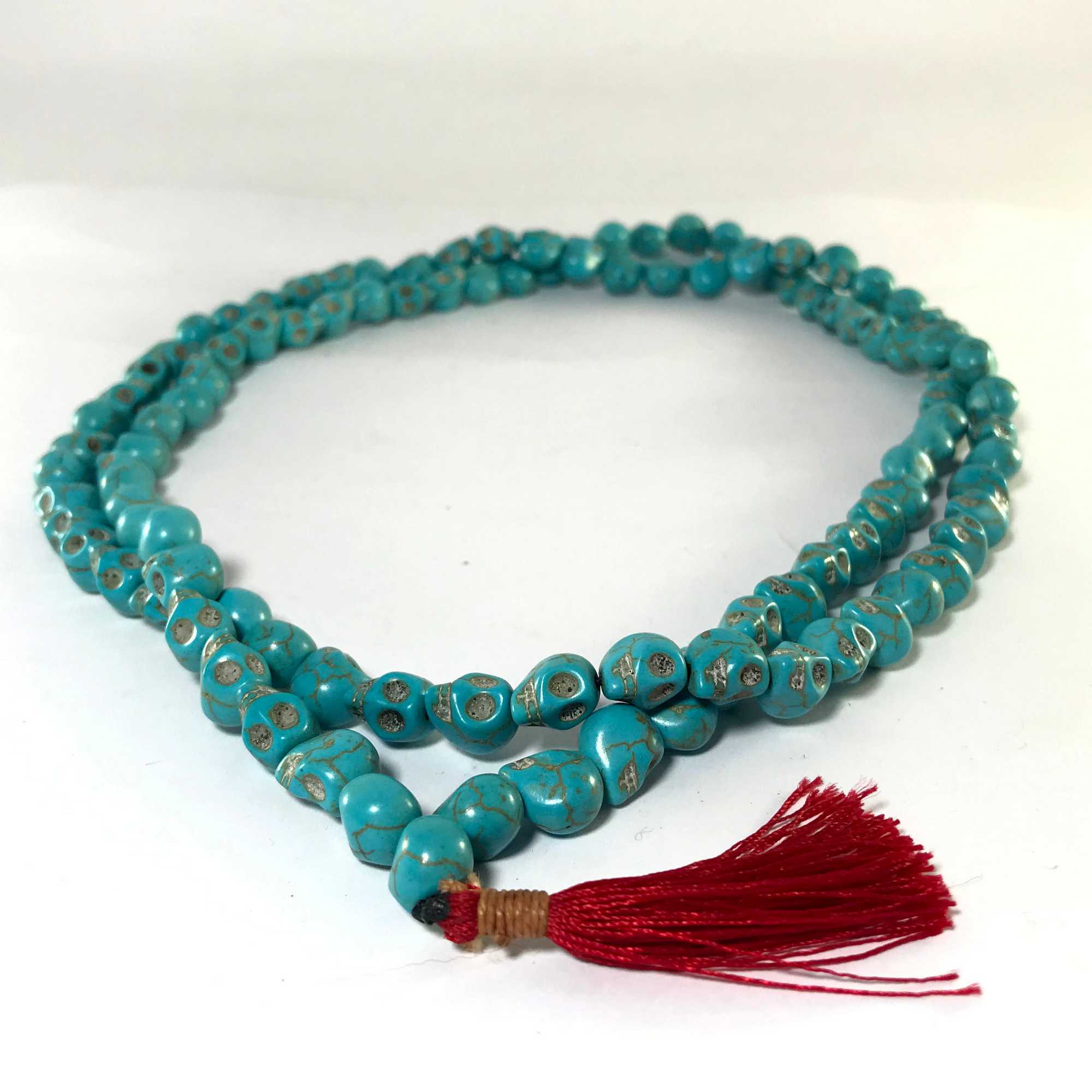


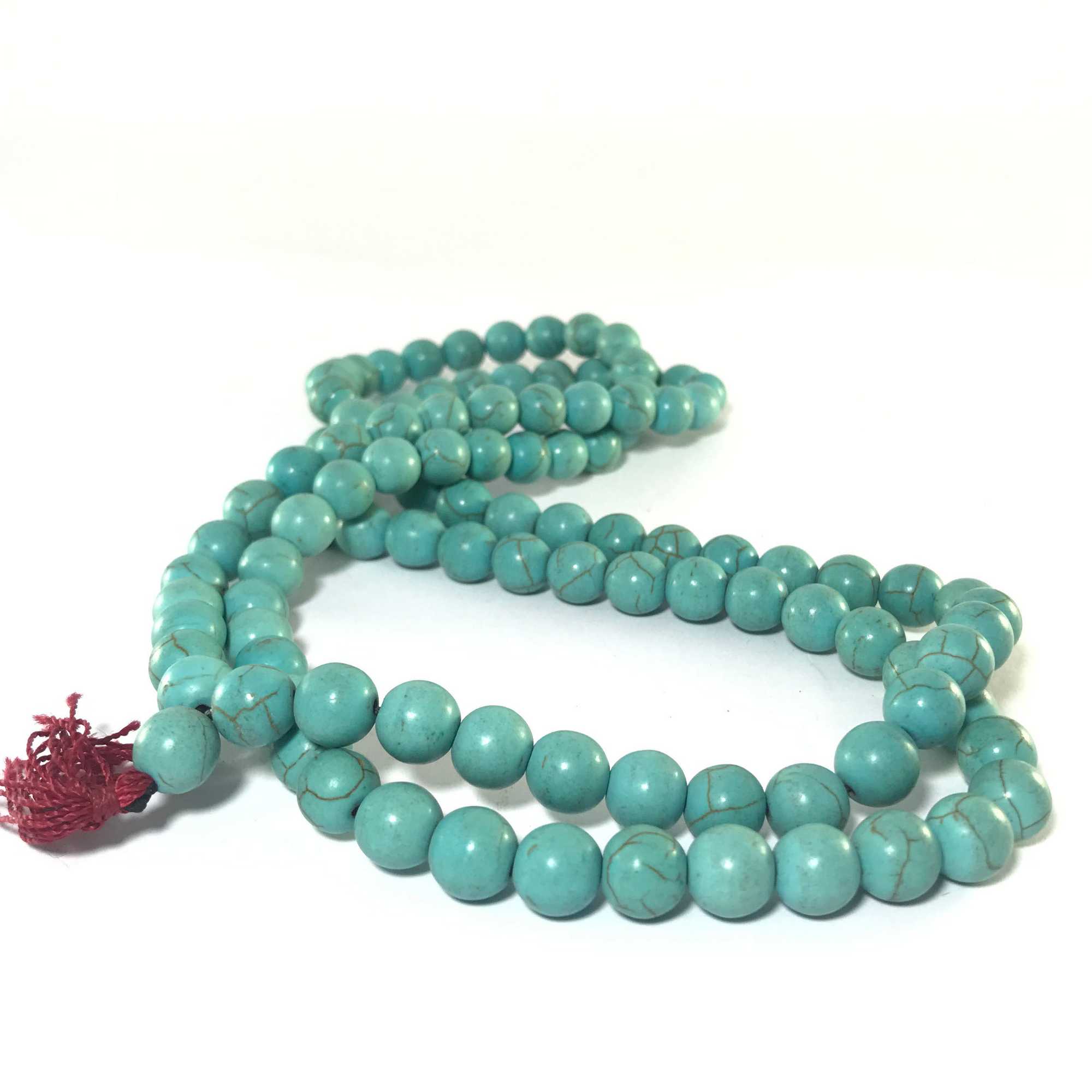
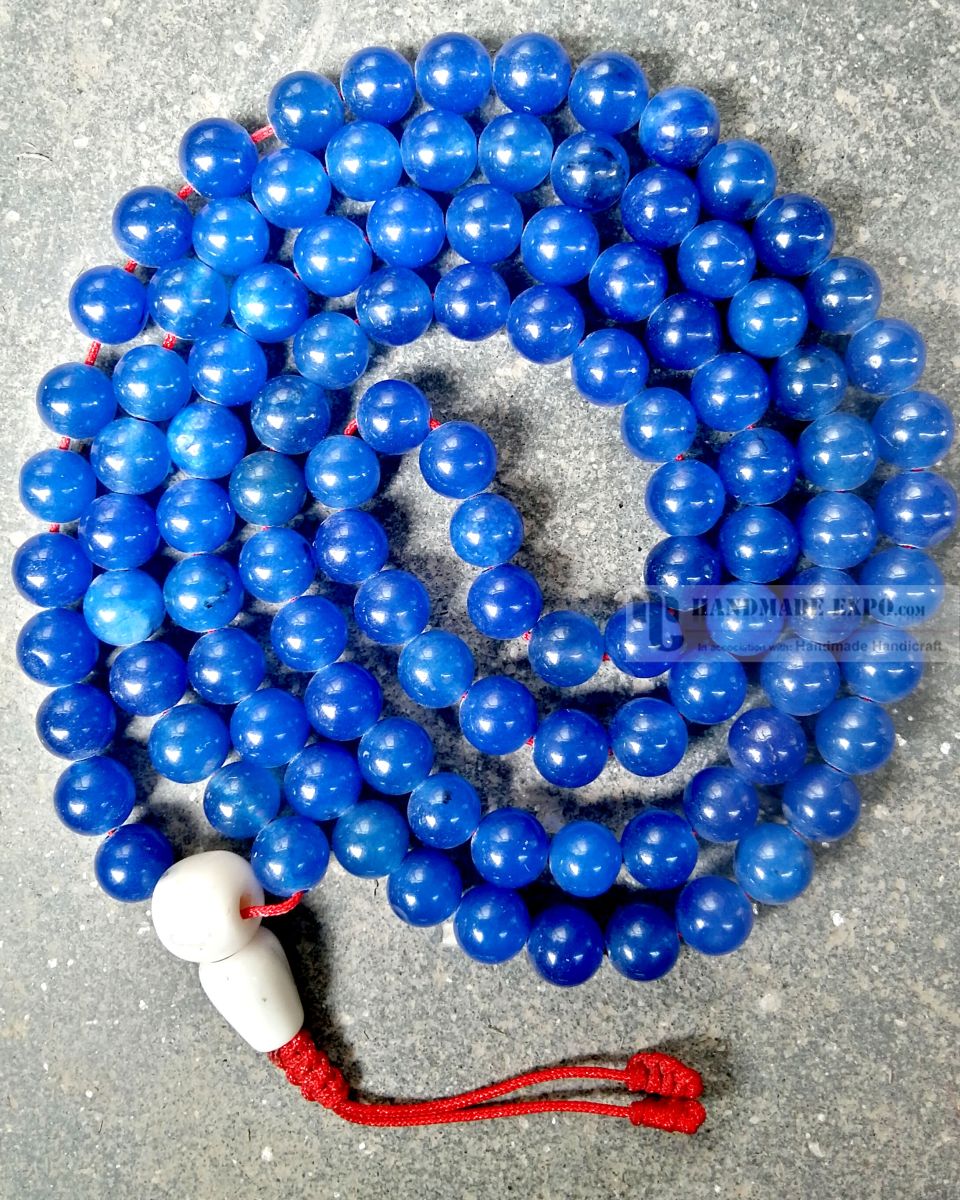
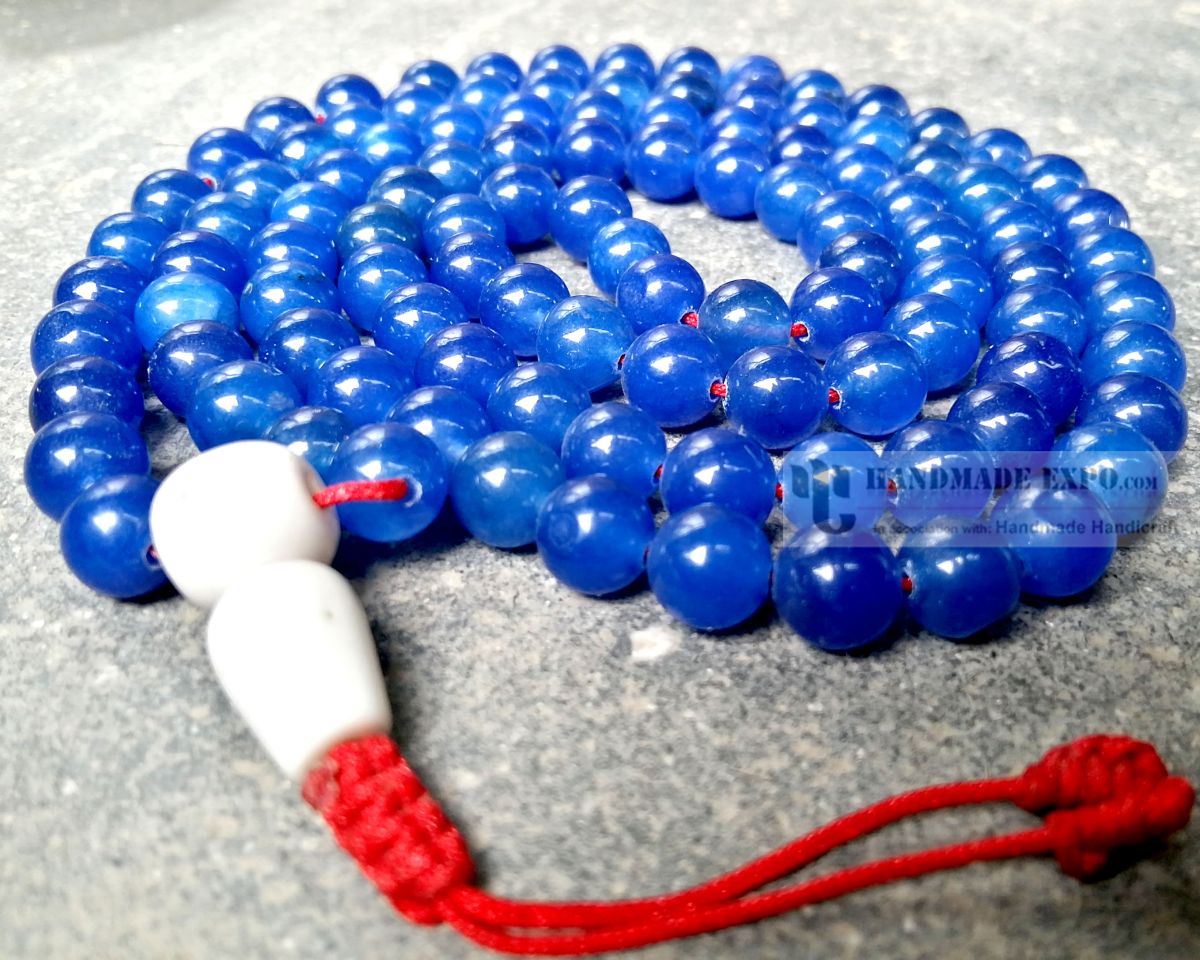

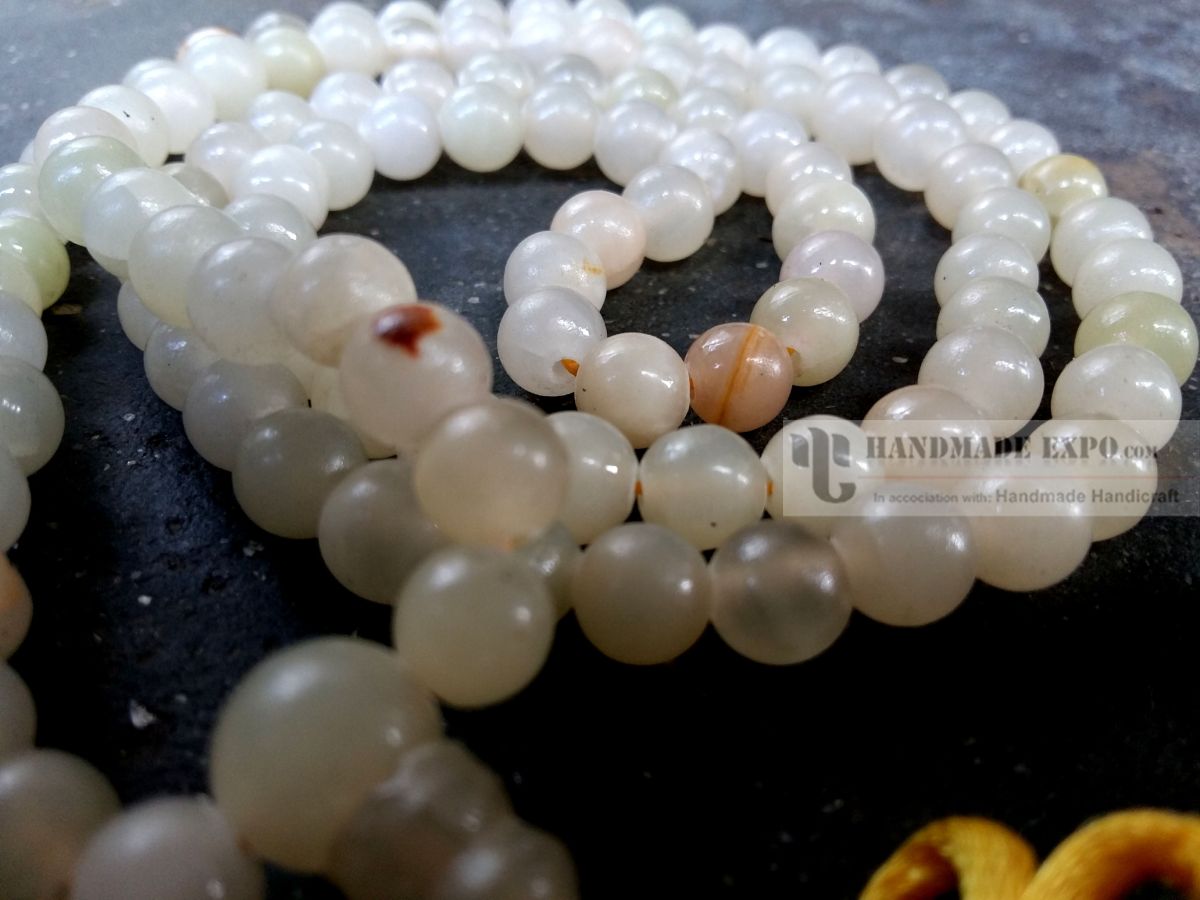
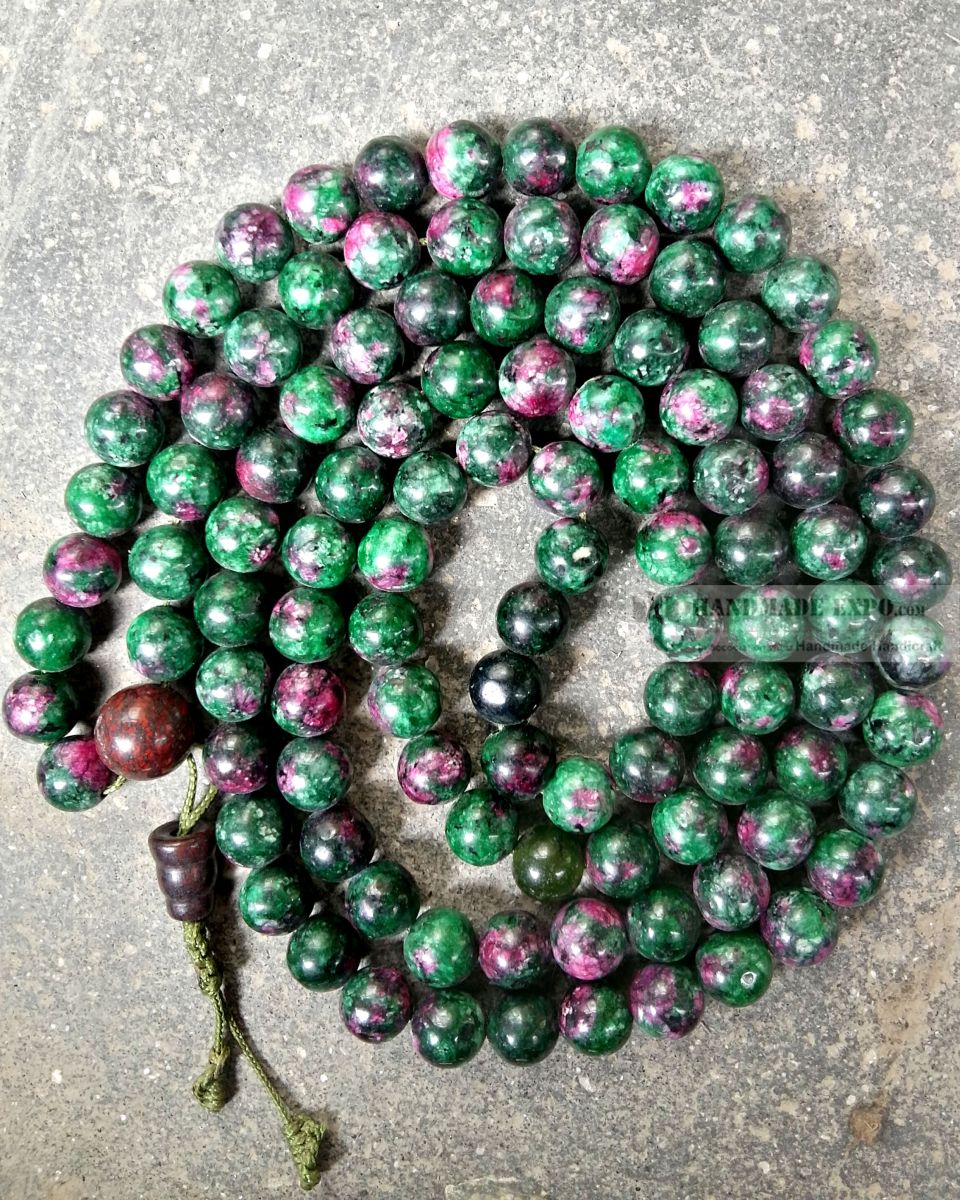
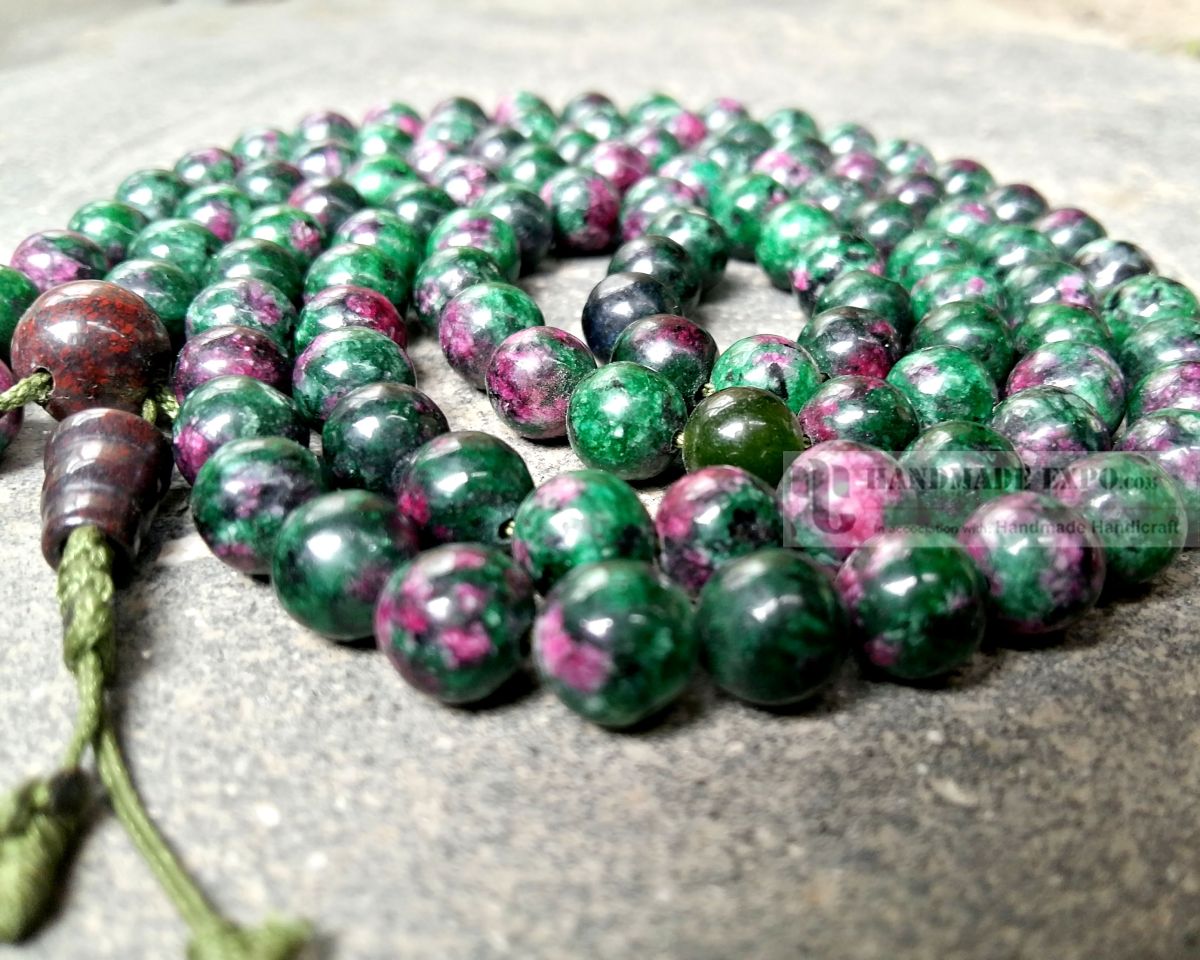
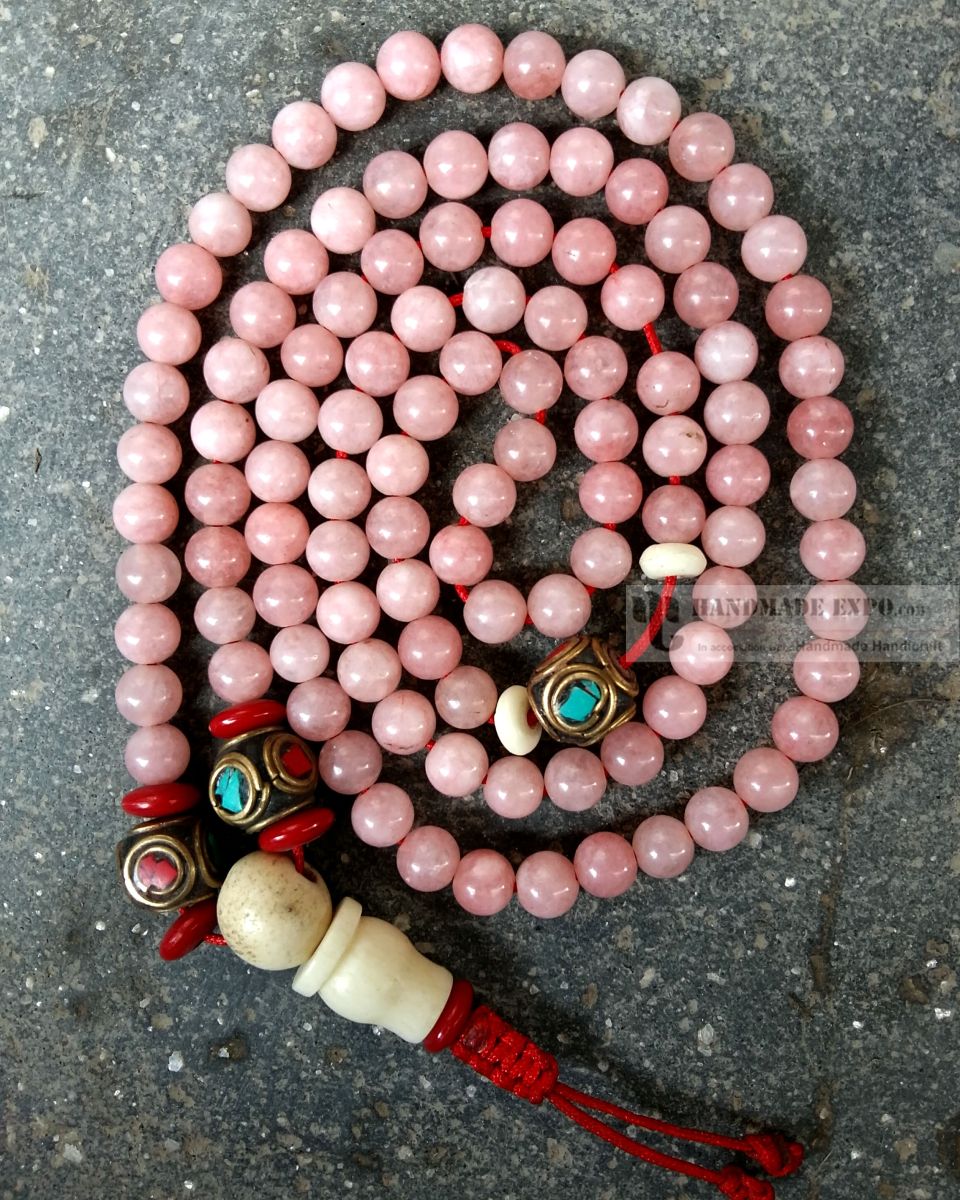
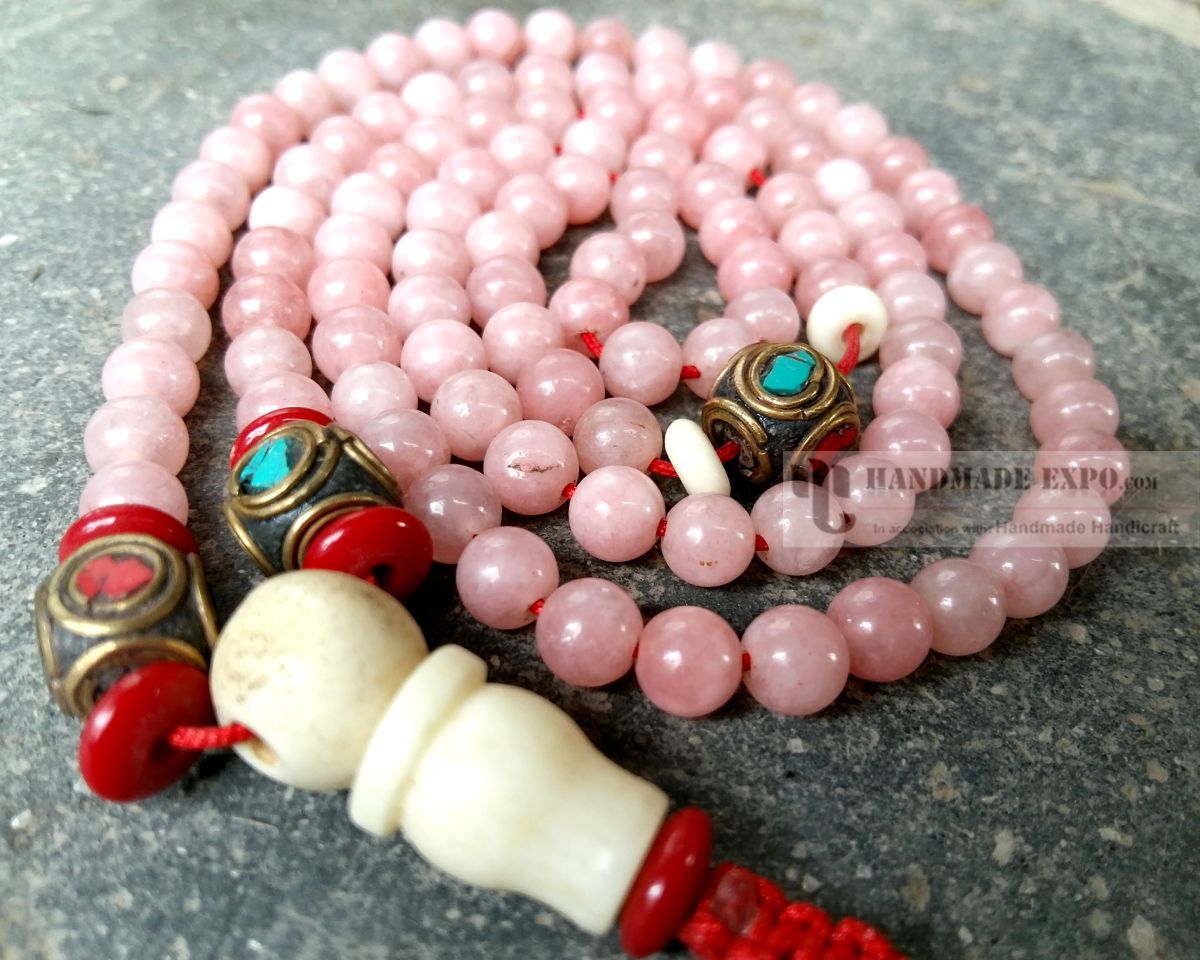
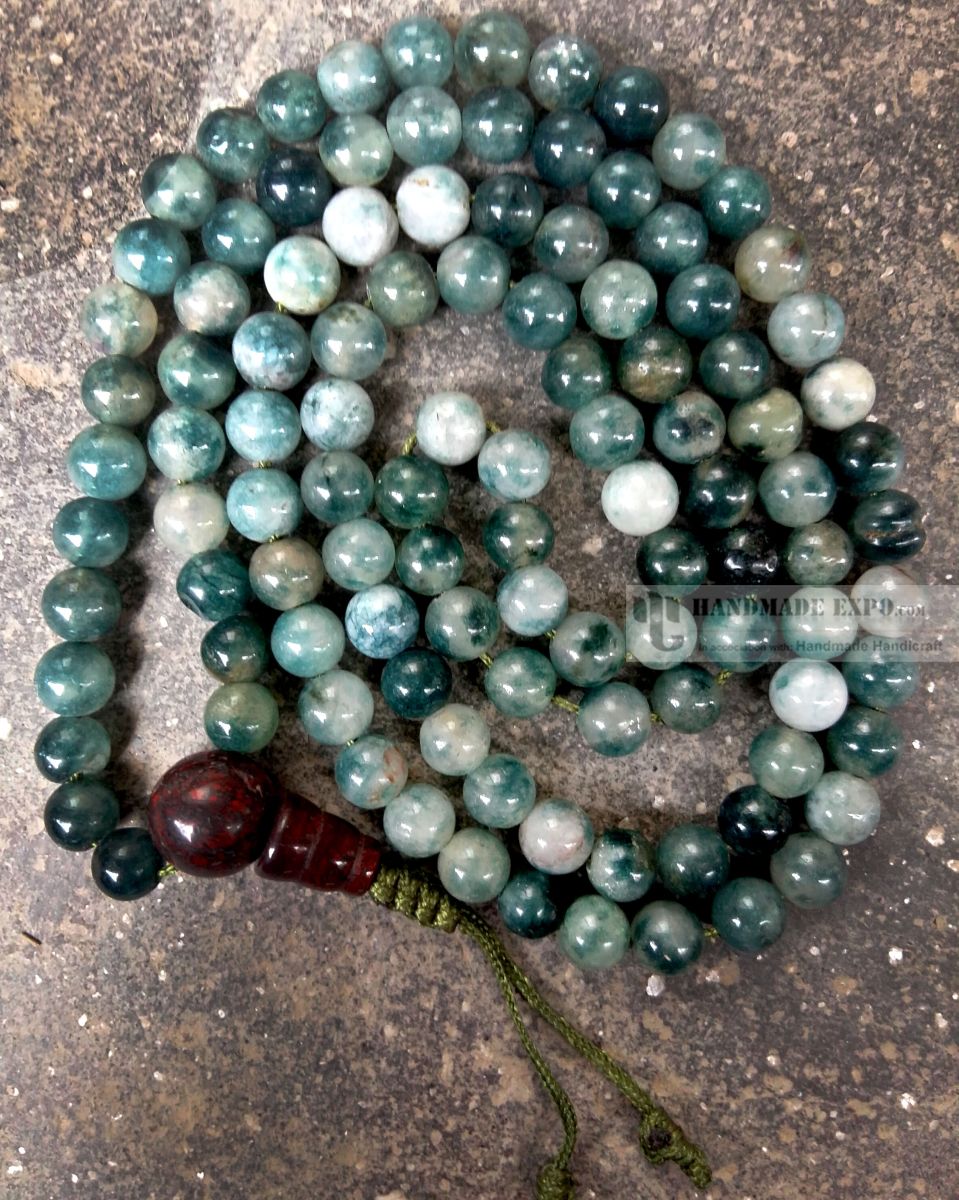
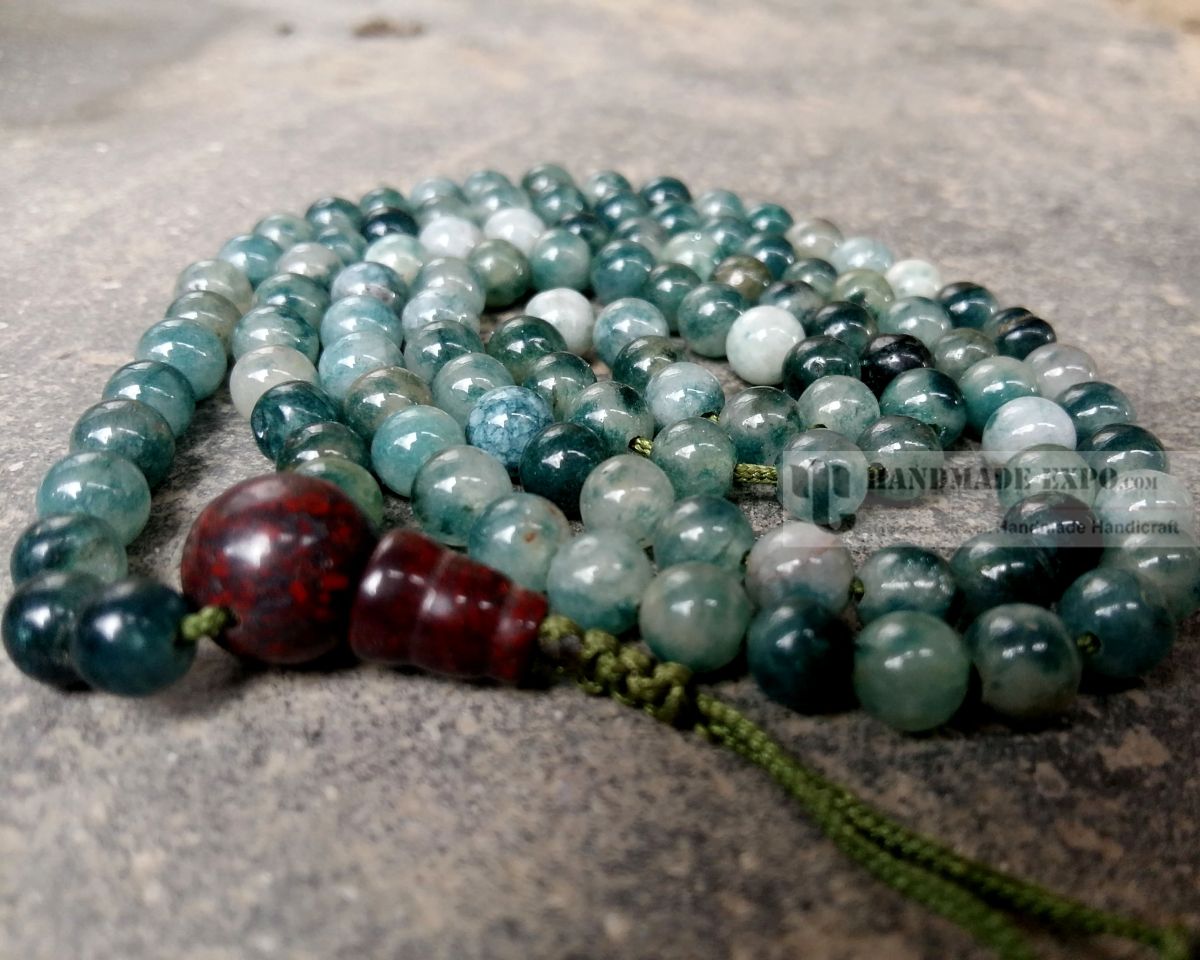
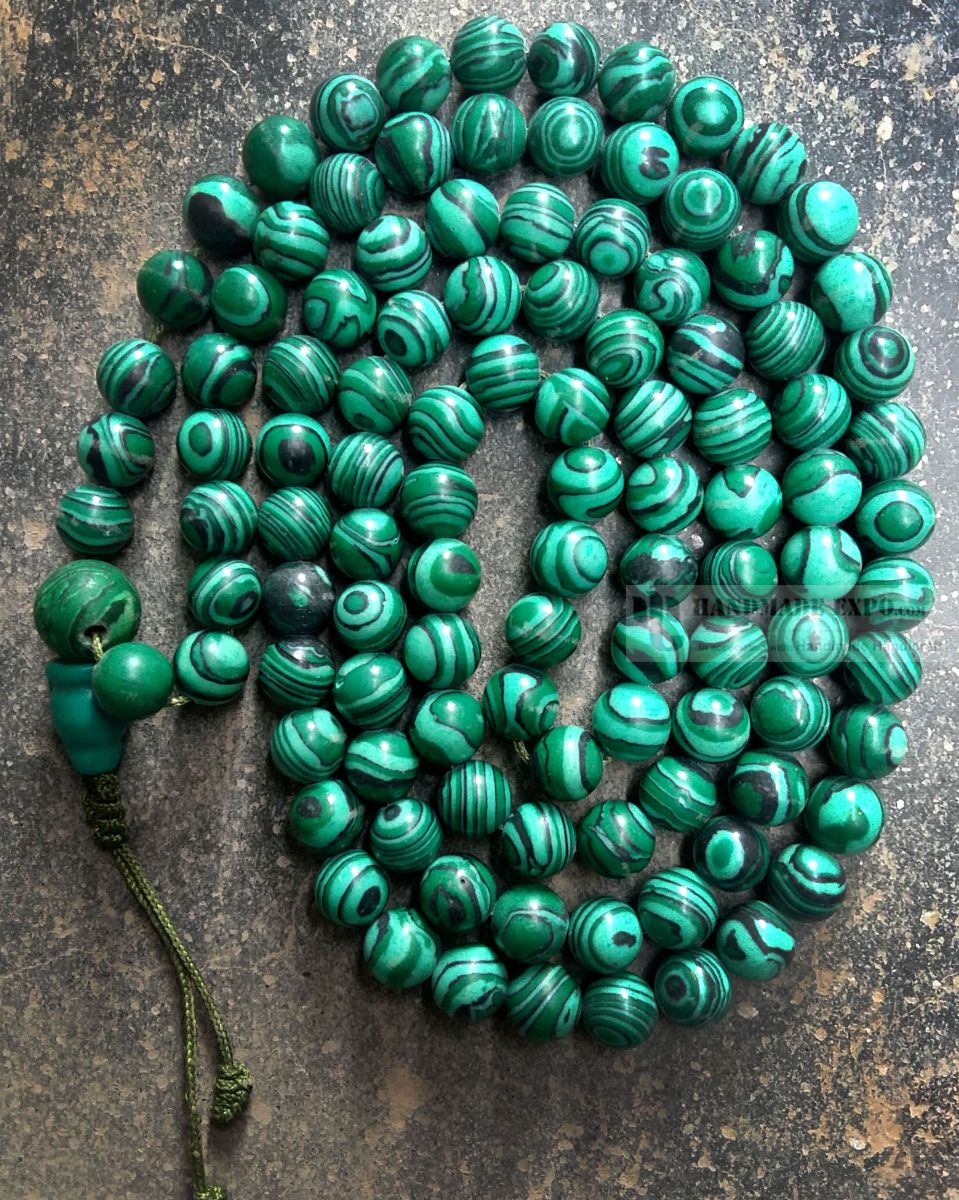
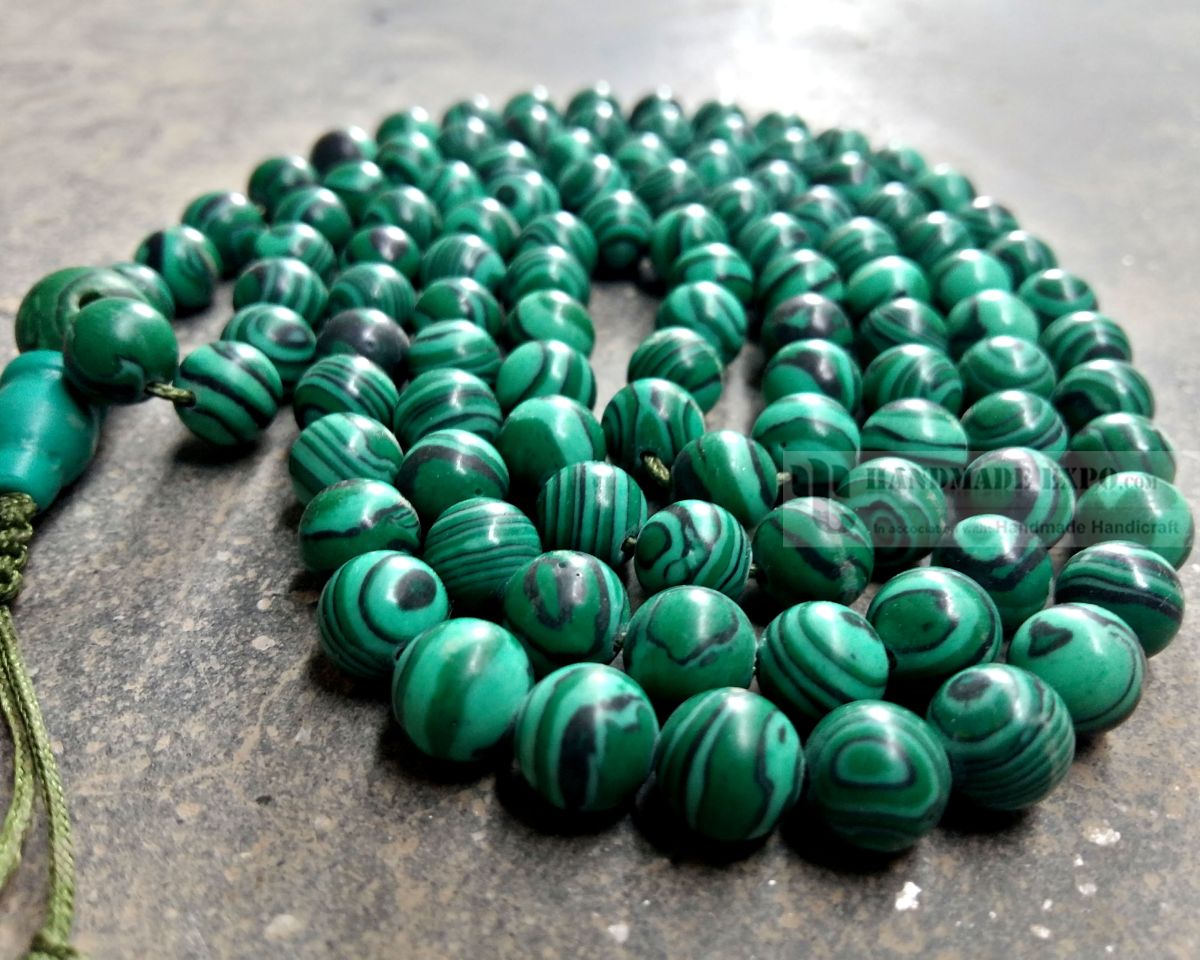
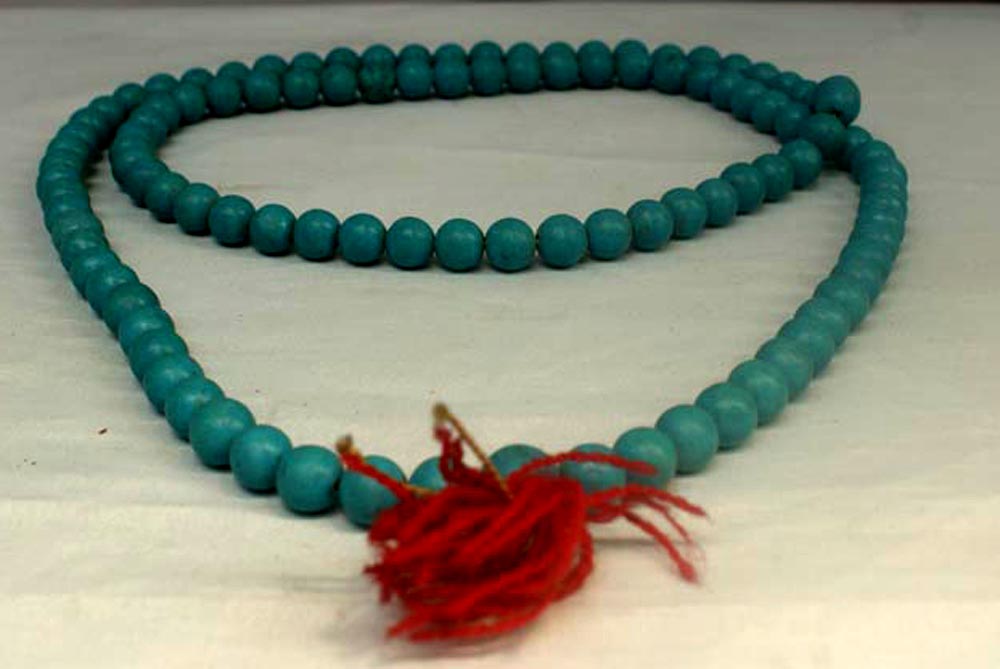
 8mm,
8mm, 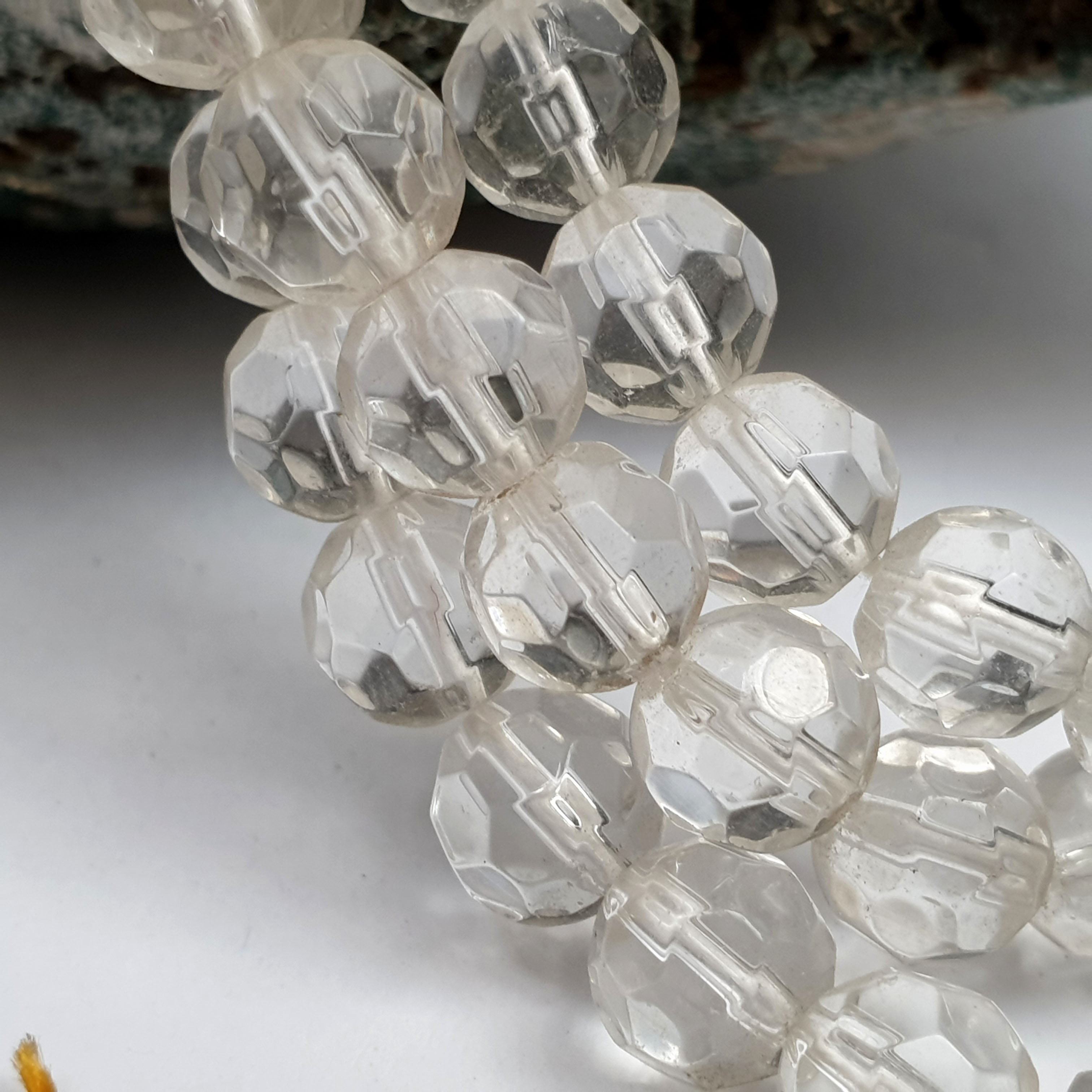 8mm,
8mm,